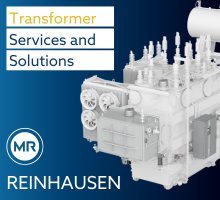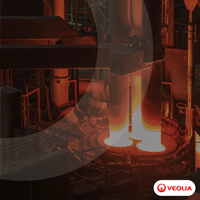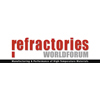ArcelorMittal South Africa Launches Saldanha Science Centre
12/08/2008 - ArcelorMittal South Africa signs memorandum of understanding for development of its second Science Centre in the Vredenburg/Saldanha Bay region of the Western Cape.
ArcelorMittal South Africa signed a memorandum of understanding with the Western Cape department of education for development of its second Science Centre in the Vredenburg/Saldanha Bay region of the Western Cape.
The company has developed the science centers as flagship projects aimed at improving math and science performance at schools in the communities surrounding the company’s operations. The centers expose students to science and technology by providing them with classrooms, science laboratories, interactive science exhibitions and curriculum-linked science and math instruction. ArcelorMittal South Africa also involves educators by providing teacher training to enhance overall teaching ability.
According to the company, poor science and math performance at the secondary education level and the unpopularity of science as a career path are critical challenges facing South Africa. This has a direct effect on the country’s growth and future competitiveness. ArcelorMittal South Africa’s investment into an additional Science Centre promotes its position as a key contributor to the Saldanha community and its future economic growth.
ArcelorMittal South Africa’s core business relies heavily on its access to a workforce that is skilled in the scientific, engineering and technological fields. Improving math and science performance at schools in the communities around the company’s areas of operation provides a sustainable resource for ArcelorMittal South Africa and allows it to work toward alleviating the national skills crisis.
ArcelorMittal South Africa CEO Nku Nyembezi-Heita, says that the company’s social development goals are aligned with government’s ASGISA and JIPSA programs. The key pillar of the policy is to align tertiary education and other institutional training with the actual skills required by both the public and private sectors. Companies support Jipsa by implementing human resource practices that either attract the right skills sets or improve the skills of existing staff.
“ArcelorMittal South Africa plays a leading role in Jipsa and has been recognized as one of the companies heading skills development and training,” said Nyembezi-Heita. “By focusing on maths and science education and technical skills training, we play an important role in bringing millions of South Africans into the mainstream economy”.
The company opened its first Science Centre in 2006 in Sebokeng, Vanderbijlpark, in partnership with the Department of Education. It provides learners in the Vaal region with access to classrooms, science laboratories, state-of-the-art computer centers and interactive science exhibitions. A measurable success of the Sebokeng Science Centre is that four of its current grade-12 pupils (the first to matriculate) will pursue engineering studies in 2009. These students are four of the 20 candidates who qualified as ArcelorMittal South Africa’s engineering bursars. This Science Centre provides learner support to 43 schools and about 1600 pupils per year. To date, almost 30 teachers improved their overall knowledge and teaching methods.
“ArcelorMittal South Africa is a major component of economic life in the communities around Saldanha,” said Nyembezi-Heita. “We would like to see more engineering and technical candidates from the area where we operate. We are sure that the Saldanha Science Centre will soon produce similar results to the hugely successful Sebokeng Science Centre.
The company has developed the science centers as flagship projects aimed at improving math and science performance at schools in the communities surrounding the company’s operations. The centers expose students to science and technology by providing them with classrooms, science laboratories, interactive science exhibitions and curriculum-linked science and math instruction. ArcelorMittal South Africa also involves educators by providing teacher training to enhance overall teaching ability.
According to the company, poor science and math performance at the secondary education level and the unpopularity of science as a career path are critical challenges facing South Africa. This has a direct effect on the country’s growth and future competitiveness. ArcelorMittal South Africa’s investment into an additional Science Centre promotes its position as a key contributor to the Saldanha community and its future economic growth.
ArcelorMittal South Africa’s core business relies heavily on its access to a workforce that is skilled in the scientific, engineering and technological fields. Improving math and science performance at schools in the communities around the company’s areas of operation provides a sustainable resource for ArcelorMittal South Africa and allows it to work toward alleviating the national skills crisis.
ArcelorMittal South Africa CEO Nku Nyembezi-Heita, says that the company’s social development goals are aligned with government’s ASGISA and JIPSA programs. The key pillar of the policy is to align tertiary education and other institutional training with the actual skills required by both the public and private sectors. Companies support Jipsa by implementing human resource practices that either attract the right skills sets or improve the skills of existing staff.
“ArcelorMittal South Africa plays a leading role in Jipsa and has been recognized as one of the companies heading skills development and training,” said Nyembezi-Heita. “By focusing on maths and science education and technical skills training, we play an important role in bringing millions of South Africans into the mainstream economy”.
The company opened its first Science Centre in 2006 in Sebokeng, Vanderbijlpark, in partnership with the Department of Education. It provides learners in the Vaal region with access to classrooms, science laboratories, state-of-the-art computer centers and interactive science exhibitions. A measurable success of the Sebokeng Science Centre is that four of its current grade-12 pupils (the first to matriculate) will pursue engineering studies in 2009. These students are four of the 20 candidates who qualified as ArcelorMittal South Africa’s engineering bursars. This Science Centre provides learner support to 43 schools and about 1600 pupils per year. To date, almost 30 teachers improved their overall knowledge and teaching methods.
“ArcelorMittal South Africa is a major component of economic life in the communities around Saldanha,” said Nyembezi-Heita. “We would like to see more engineering and technical candidates from the area where we operate. We are sure that the Saldanha Science Centre will soon produce similar results to the hugely successful Sebokeng Science Centre.
“We recognize that our position in Southern Africa and in the global steel industry brings unique responsibilities,” added Nyembezi-Heita.



.png?lang=en-US&ext=.png)






